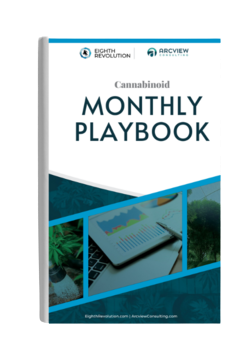Cannabis companies have been fighting and are in desperate need of some form of unlocking. While most were echoing their sentiments toward DC to provide a lifeline, someone else heard the call instead. Twitter execs presented at Benzinga Capital Conference with an incredibly powerful statement.
“Twitter Has Your Back”
Those are four simple words, but did anyone else have upsetting flashbacks kick in? It sounds an awful lot like the empty, open promises we have seen in the past from {insert politician name}. Twitter has ALREADY altered its platform policy to support the cannabis industry by relaxing its advertising policy a far cry from Meta’s policy of shutting down Instagram accounts. Paid advertisements are indeed advantageous for Twitter as a new revenue stream, but those with a locked toolbox shouldn’t scoff at a tool that finally breaks out. This is extremely helpful for various businesses in the cannabis space, not just the brands or retailers trying to drive sales.
Before we dive into some of the specifics and benefits, it’s important to understand the following:
The policy is fluid. Cannabis is challenging, and the rules are gray. Twitter will likely need to make ongoing changes and updates to its policy as time goes on. The policy, while straightforward, has some items that may deter some initially. Minimum spending will likely be high, and patience will be critical, something I desperately struggle with as well.
Here is an excerpt from the policy:
“Advertisers may not promote or offer the sale of cannabis (including CBD– cannabinoids)
Exception: Ads for topical (non-ingestible) hemp-derived CBD topical products containing equal to or less than the 0.3% THC government-set threshold.”
And other expected restrictions:
- Must not appeal to minors in the creative; landing pages must be age-gated, and sales must be age-verified.
- Must not make claims of efficacy or health benefits.
- Must not make false/misleading claims.
- Must not show any depiction of cannabis product use.
- Must not depict people using or under the influence.
- Must not encourage transport across state lines.
The full policy is linked here.
While the policy may hinder some, spending may be another issue. Here is the hard truth about paid ads. They’re expensive, and it takes time for you to learn which creative aspects and copy resonate with your audience. It also takes time for Twitter algorithms to figure out, too. Time costs money, and you’ll need to make sure you don’t expect instant results.
Now, let’s get into the benefits of spending the money. Please note that these strategies aren’t just for Twitter ads but for theories and examples behind why and how to think, utilizing this as a tool. The one thing about the individuals in the cannabis industry is that they are creative and will constantly seek to find out how to operate in the gray.
Marketing has an old adage about touching points, which are interactions with your brand product, with Salesforce believing it takes “6-8 marketing touches to generate a viable sales lead.”
Currently, brands on dispensary shelves are using price-slashing tactics to drive sales. This tactic is detrimental for all parties as a no-margin product hurts operations and leads the consumer to misalign the value of products. Cannabis companies can now alter their marketing efforts to deliver clever messaging and crafty imaging to capture attention and solidify brand positioning BEFORE they enter the dispensary, which helps to build brand staying power.
While many can easily associate paid ads with sales conversion, the area I would AGGRESSIVELY suggest for many others is opening the top of the funnel. Gary Allen, also at the Benzinga Capital Conference, said, “The cannabis industry has a top-of-the-funnel problem.” The top of the funnel is the ability to take current non-consumers or rare cannabis consumers and provide them with educational and valuable content to slowly move them closer to intent and interest. This messaging isn’t price-driven; it’s attention-capturing and helps consumers identify that cannabis can be a potential solution or substitute for another product.
For example, for the boomer who uses a combination of booze and Ambien to go to sleep, are you aware of an alternative? This requires a deeper understanding of who your target customer is and building out all the messaging and efforts around that consumer to ensure that your brand/product speaks to them directly. More importantly, running paid ads is a constant effort of testing, editing, and revising to find the ideal combination. Here are a few ways I’d set up campaigns.
Geographic Targeting (Geofencing)
Geographic targeting allows cannabis companies to focus their advertising efforts on demographic criteria in a specific location. Think of it like an invisible fence. A targeted individual logs onto a Wi-Fi connection in an area and is cookied, which allows the brand to target them more aggressively in the future or more directly now. Using the boomer in our example from before, it may be helpful to serve them a quick, broad ad on plant medicine as they enter a local CVS, Target, or liquor store.
Persuading consumers to enter a dispensary could also be a metric that brands look to leverage for success. For example, let’s say, on average, the dispensary gets 2,000 individuals in the door. If 25% of those individuals spend $80, it’s easy to see how beneficial advertisements are to the top line without having a direct way to attribute ads for ROI.
Here is the math for those who prefer to see it drawn out.
| In-store visits | Conversion | Avg Basket Size | Revenue |
| 2,000 | 25% | $80 | $40,000 |
Now, if you spend $5,000 on paid ads and increase JUST the number of customers coming in the door, you come out ahead after subtracting the spending.
| Customers | Conversion | Avg Basket Size | Revenue |
| 3,000 | 25% | $80 | $60,000 —(5,000) =$55,000 |
By geofencing to target potential customers within a specific radius around their store or dispensary, this strategy allows the retailer to promote special deals, new product arrivals, and other incentives to drive foot traffic and increase sales. Brands have limited capital, so deploying a targeted approach to promote a single SKU or drive interest into a dispensary for a new release can help find others that are not everyday dispensary consumers.
Retargeting
Retargeting is an effective strategy for re-engaging users who have visited a company website, engaged with previous ads, or abandoned shopping carts. Retargeting is also crucial for post-purchase brand loyalty building. If a consumer has purchased your product, you have the chance to build on that messaging and lock in the next step of brand loyalty.
Brands can use retargeting to re-engage users who have shown interest in their products but haven’t made a purchase. By displaying ads, the brand can encourage users to revisit their website and complete their purchase.
A local retailer can use retargeting to remind customers about special deals or promotions they might have missed. This strategy can lead to increased sales and help build customer loyalty through repeated purchases.
An e-commerce platform can use retargeting to remind users about abandoned shopping carts. By displaying ads about the cart, the platform can encourage users to return to the site and complete their transactions, increasing overall sales and revenue.
Demographic and Audience Targeting
Demographic targeting allows cannabis companies to tailor their advertising campaigns to reach specific age groups, genders, or other demographic factors based on product preferences and customer data. Cannabis brands can segment their audiences based on demographic data to create targeted campaigns for different product lines. For example, the brand could target younger consumers with vape products while targeting older users with CBD-infused products for pain relief.
A local cannabis retailer can use demographic targeting to appeal to specific customer segments based on their preferences. For instance, a retailer might target female customers with cannabis-infused beauty products or male customers with cannabis-related accessories. A cannabis industry publication could use demographic targeting to reach potential subscribers interested in the latest news, research, and trends.
For many of you, this is Marketing 101, but for others that are wondering if Twitter ads are worth it or how it will help them, the answer is “it depends.” It’s critical to understand before you engage in any marketing efforts. Before we start any project, I always ask, “What is your goal, and what does success look like?” Most of the time, the goal is an increase in sales, which means awareness-based marketing is not going to deliver the top-line numbers you are likely seeking. For many of you that are looking to build your brand and looking to invest in the growth of your business, experimenting here would be beneficial. We don’t have all the tools utilized from a standard perspective, but we need to be creative with the ones we have. Be patient, and recognize that “learning” is a part of the algorithm that everyone hates.
If you need help, ping me [email protected] or [email protected]
Editors’ Note: This is an excerpt from our Monthly Playbook. If you would like to read the full monthly playbook and join the thousands of others you can sign up below.


